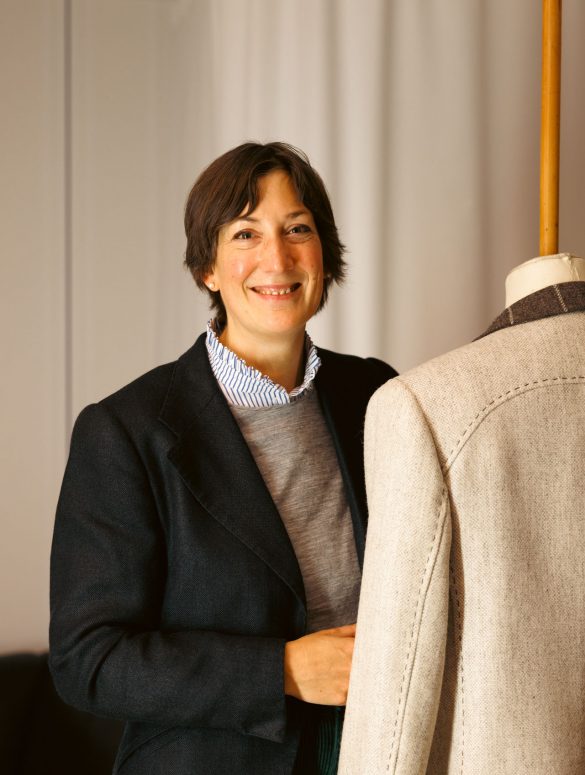The Munich-based tailor has been self-employed for 20 years and her customers come from a wide variety of professions. What they all have in common is their love of handcrafting and the individuality of the “bespoke” from Potsdam.
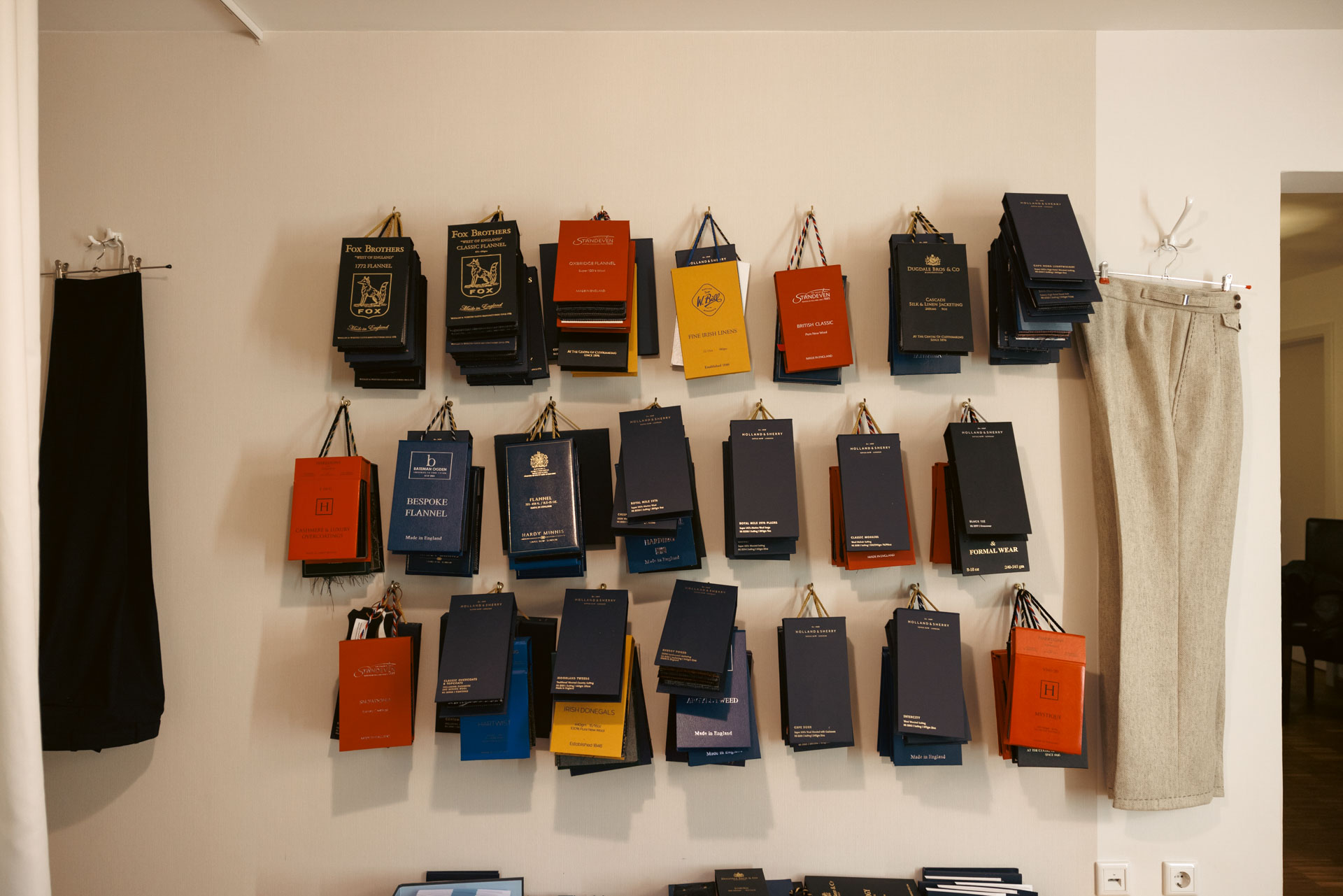
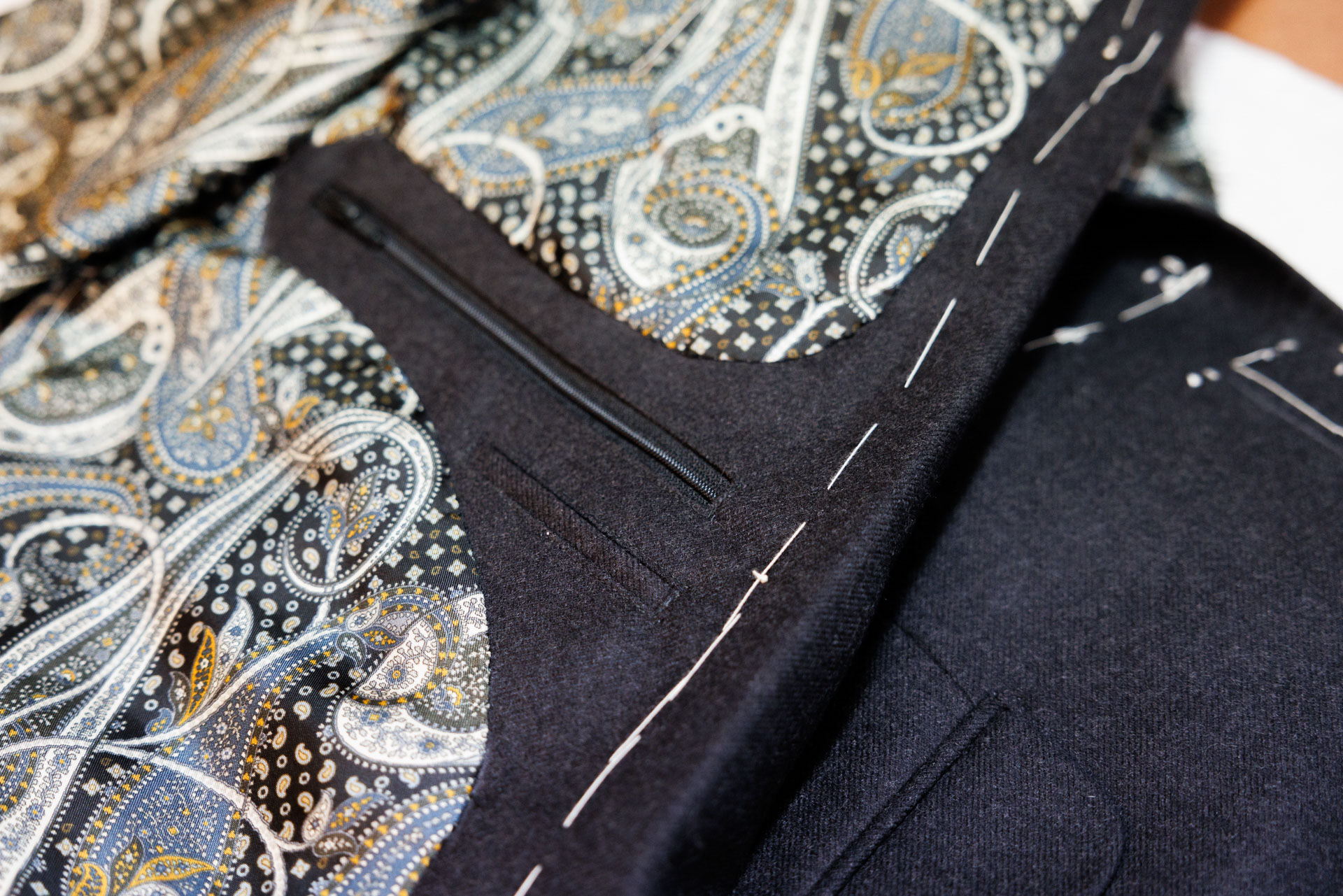
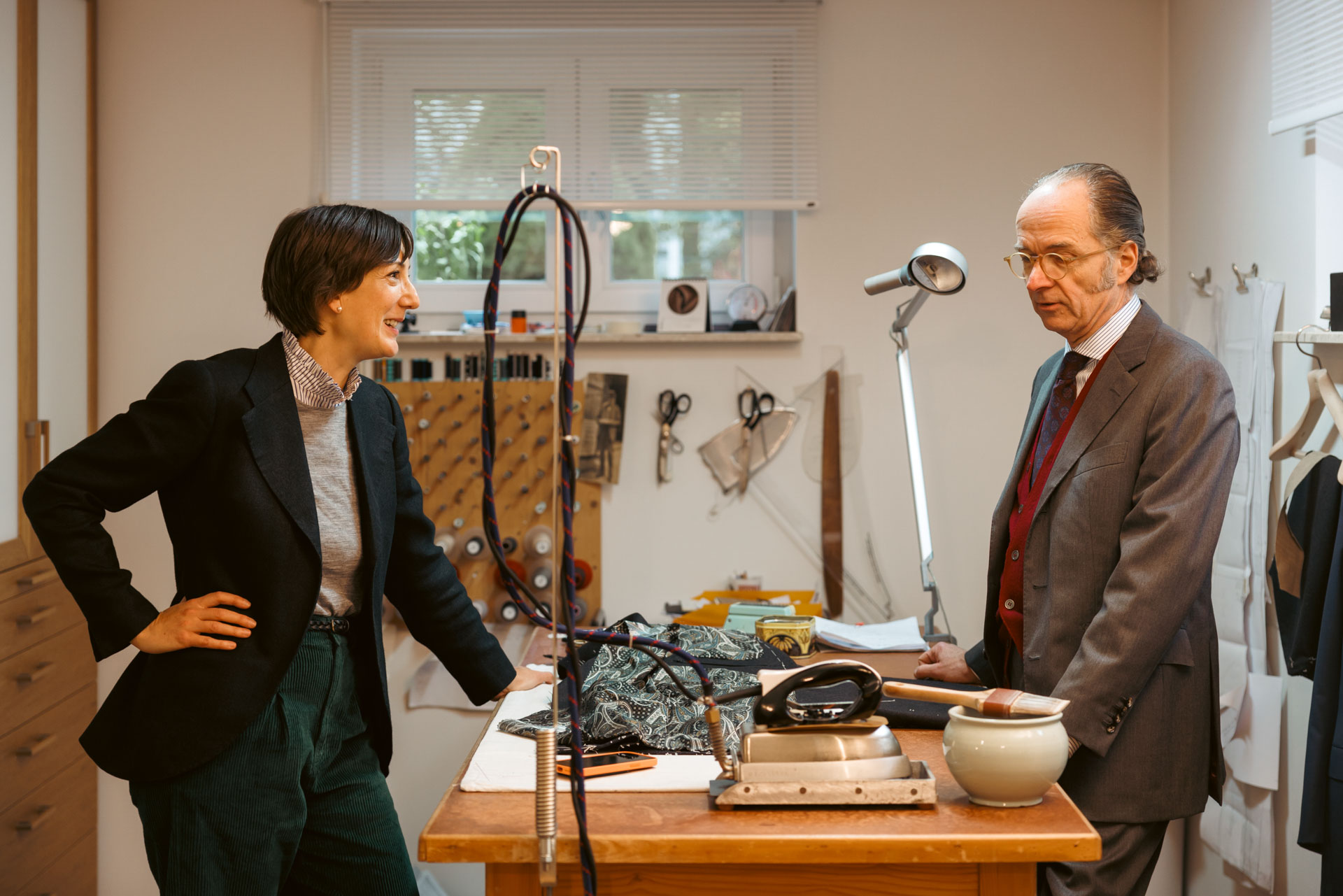
November in Berlin. It’s gray and cold. Tommi Aittala and I board the S7 train to Potsdam at Zoo station. We travel west past the Charlottenburg, Grunewald and Wannsee stations to Griebnitzsee. Most of the people on the train are students who get off with us. You are on your way to university in Potsdam. The station has a long history. In 1874, a wooden pavilion was erected on the Berlin-Potsdam railroad line; travelers reached the new Neubabelsberg villa estate from the stop. The current station building was built in 1931. In the meantime, the station was called Babelsberg-Ufastadt, and has borne its current name since 1949. We leave it to the left into Rudolf-Breitscheid-Straße. Around the station there are some prestigious new buildings, after a few hundred meters smaller villas and detached houses predominate. After about ten minutes, we turn onto a small cul-de-sac. We know the route from several visits. The studio is located in a detached house. There is no store sign or shop window to indicate the tailor’s shop; the doorbell sign simply says “Emmer”.
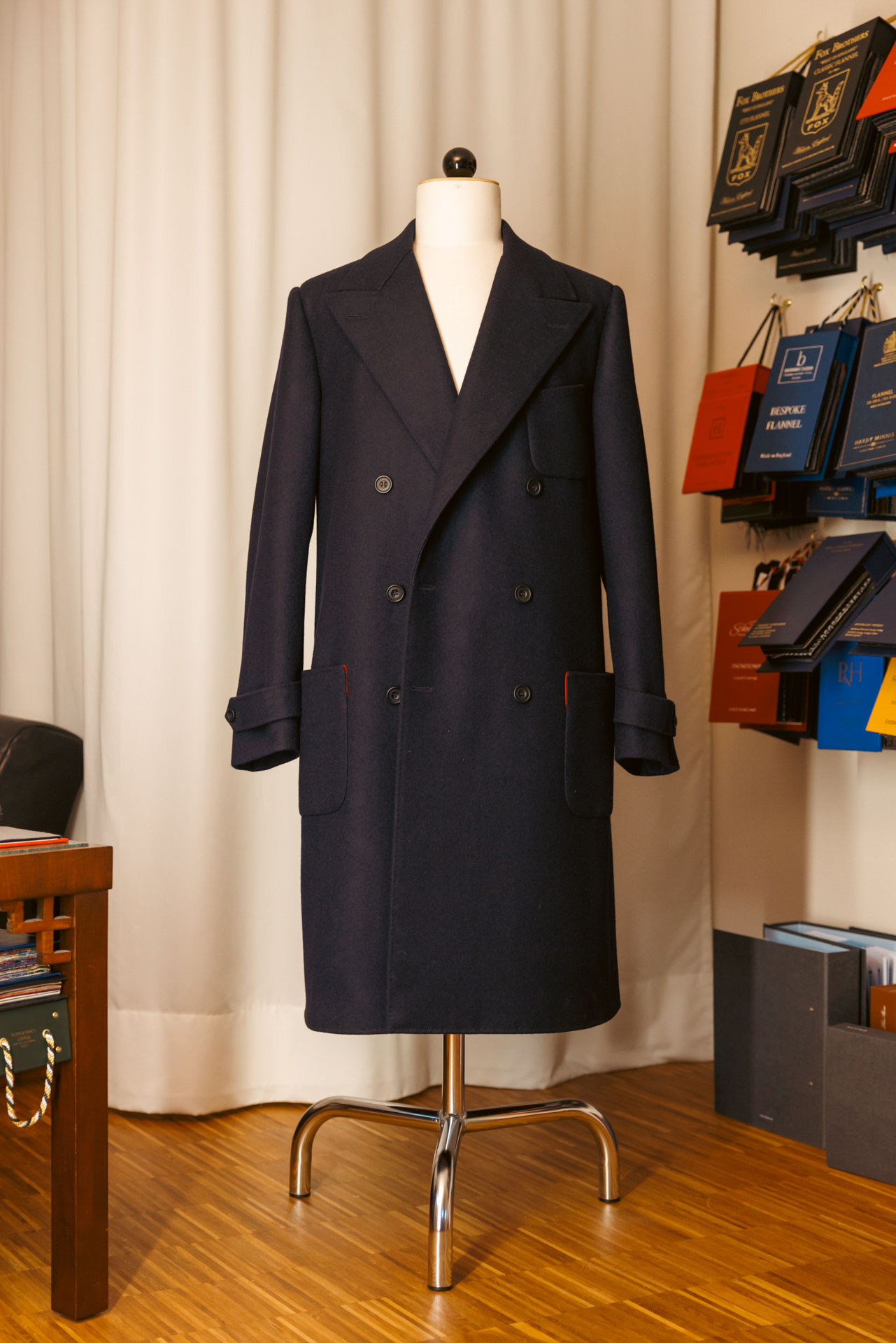
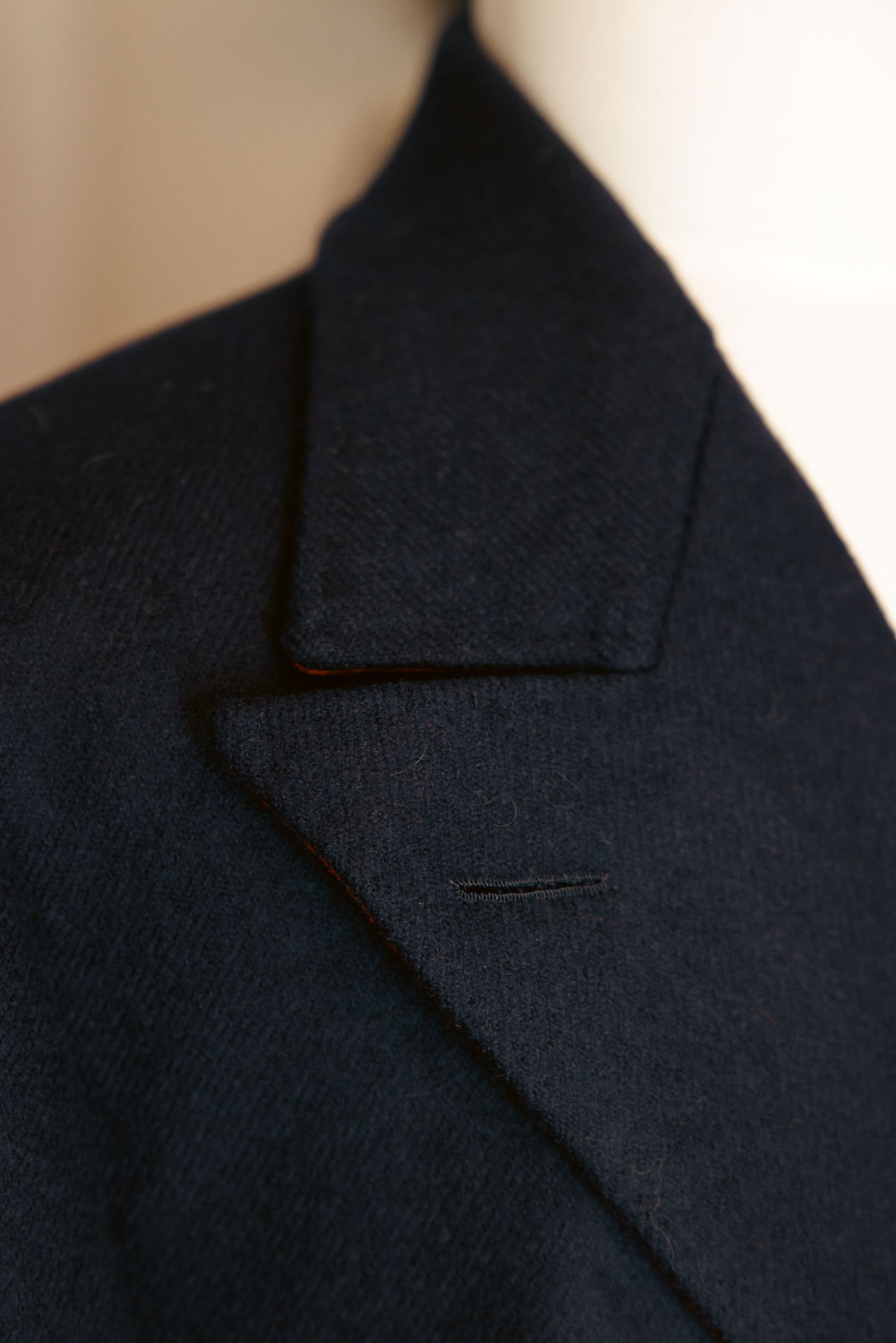
The Munich-born master tailor wears a blazer and green wide-leg pants with pleats. The collar of a blouse peeks out from under the sweater. She looks young, almost girlish. It’s hard to imagine that she has already been in the profession for 31 years, 20 of them as a self-employed master tailor.
She began her apprenticeship in 1992 with the Munich master craftsman Karl Werstein and completed her journeyman years with Volkmar Arnulf in Berlin. Arnulf is the old master of German men’s tailoring, colleagues speak of him with the greatest respect. His studio was still located on Kurfürstendamm at the time, but he is now also based in Potsdam. Kathrin Emmer completed her time with Arnulf with the master craftsman’s examination and opened a studio in Wedding in 2003. A somewhat unusual location for handmade men’s suits; you’d expect to find bespoke suits in Charlottenburg. Some of her customers also lived there. Even then, she only received customers by appointment. Then as now, she did without a shop window in a good location to attract walk-in customers. Men’s tailoring thrives on recommendations. In 2012, she moved out of Berlin to Potsdam, into a newly built house with her husband and daughter.
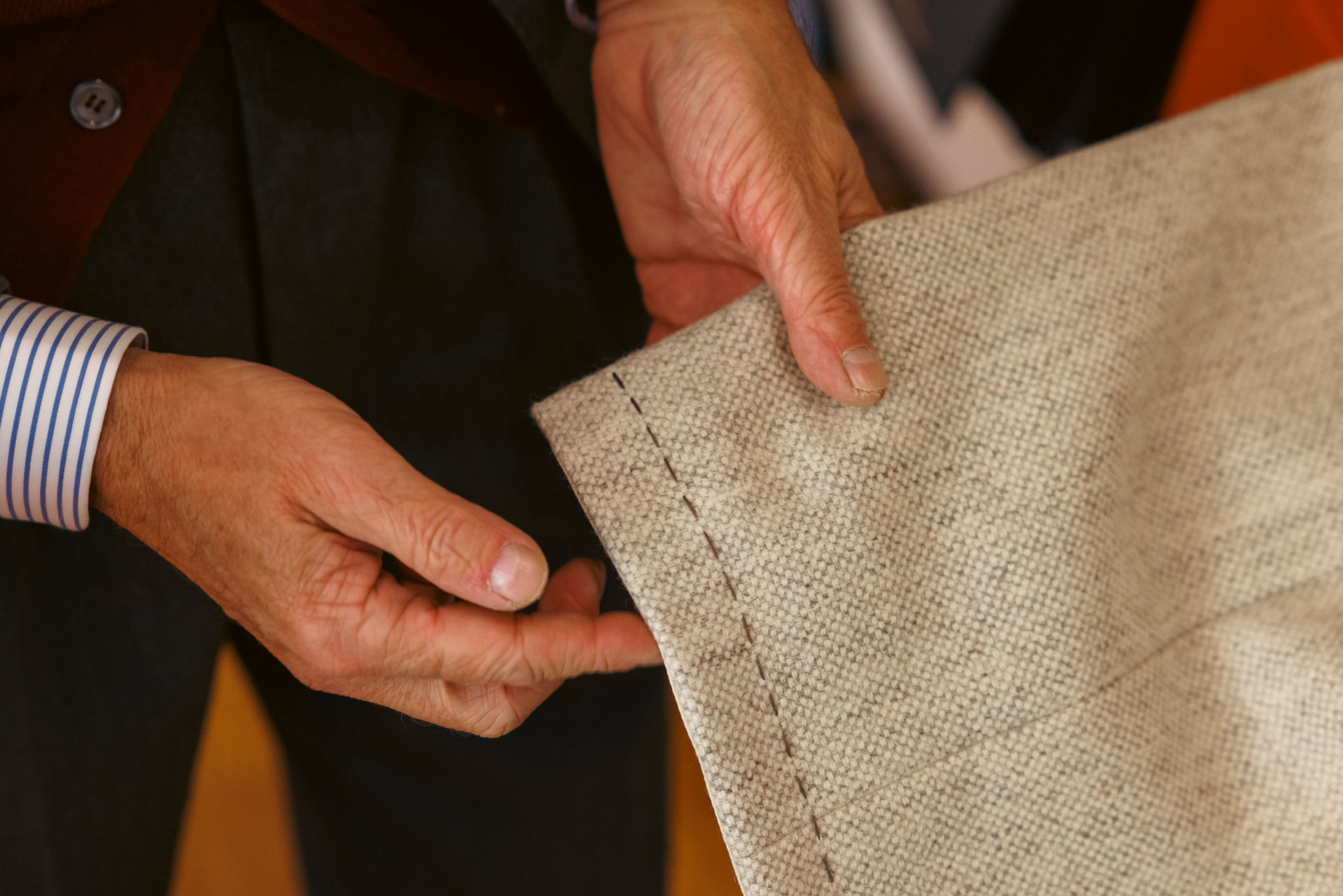

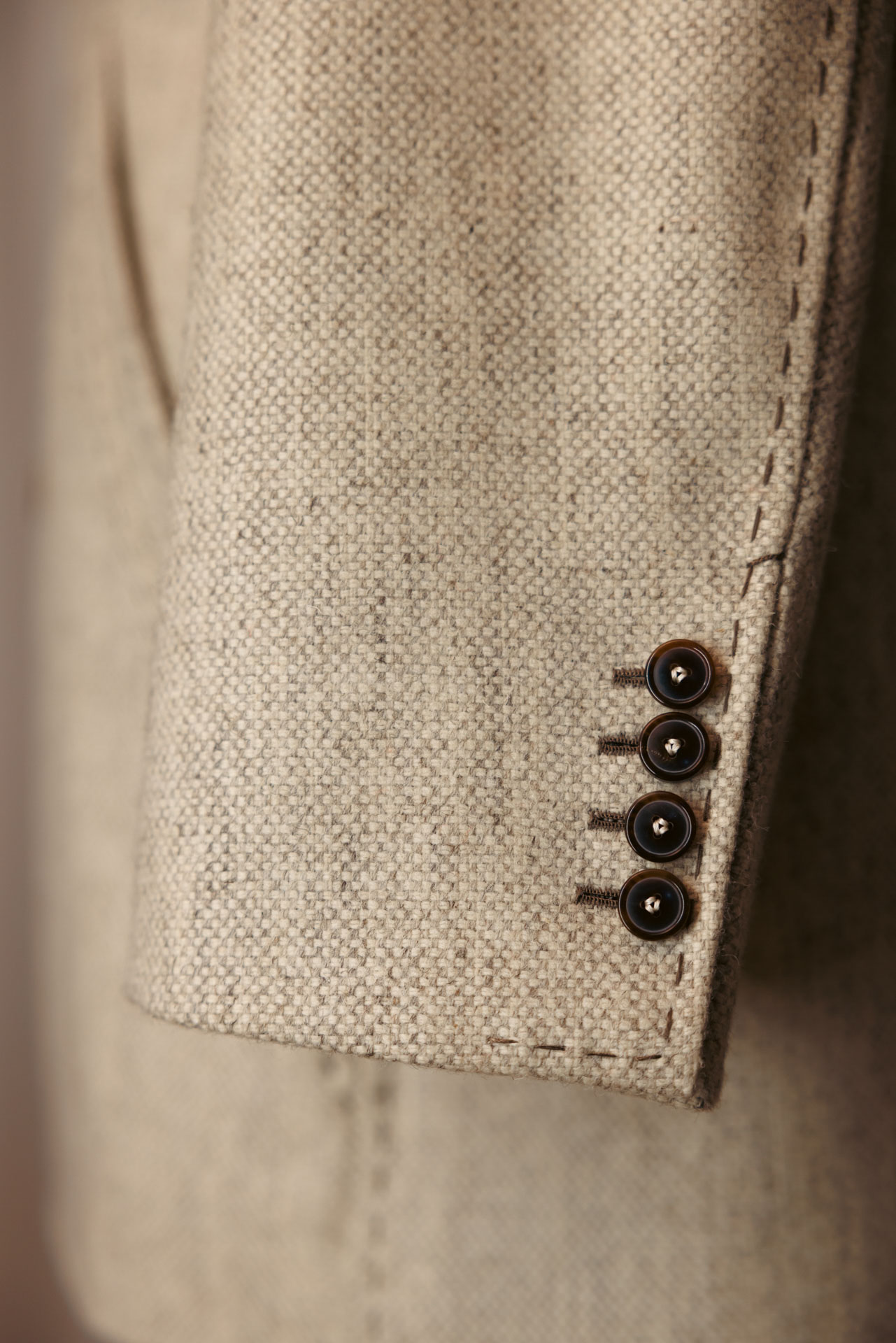


The studio is located in the basement of the modern city villa. It goes down a small staircase and through a glass door into the bright workshop. To the left of the window is the cutting table, in the middle between the windows is a large mirror. Sofa, seating area and Spanish wall on the right. Kathrin Emmer works alone, she does everything herself from the cutting to the hand-hemmed buttonholes. She has always tried large-scale tailors, to whom she has given jackets or pants to make. In the end, however, she was never satisfied and had to invest so much time in reworking that the time saved was lost. As a master craftswoman, she could train an apprentice, but her studio is too small for two tailors.
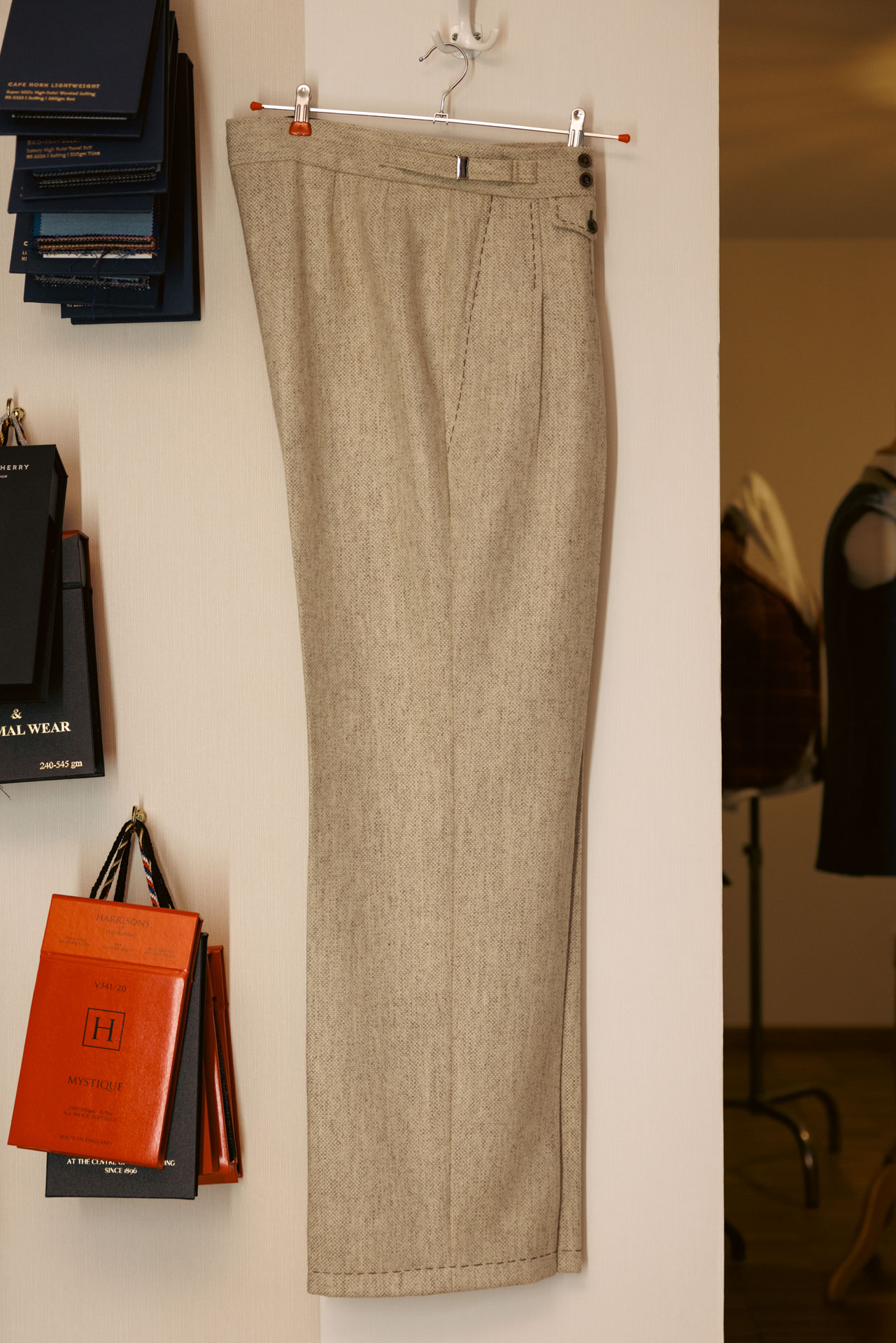
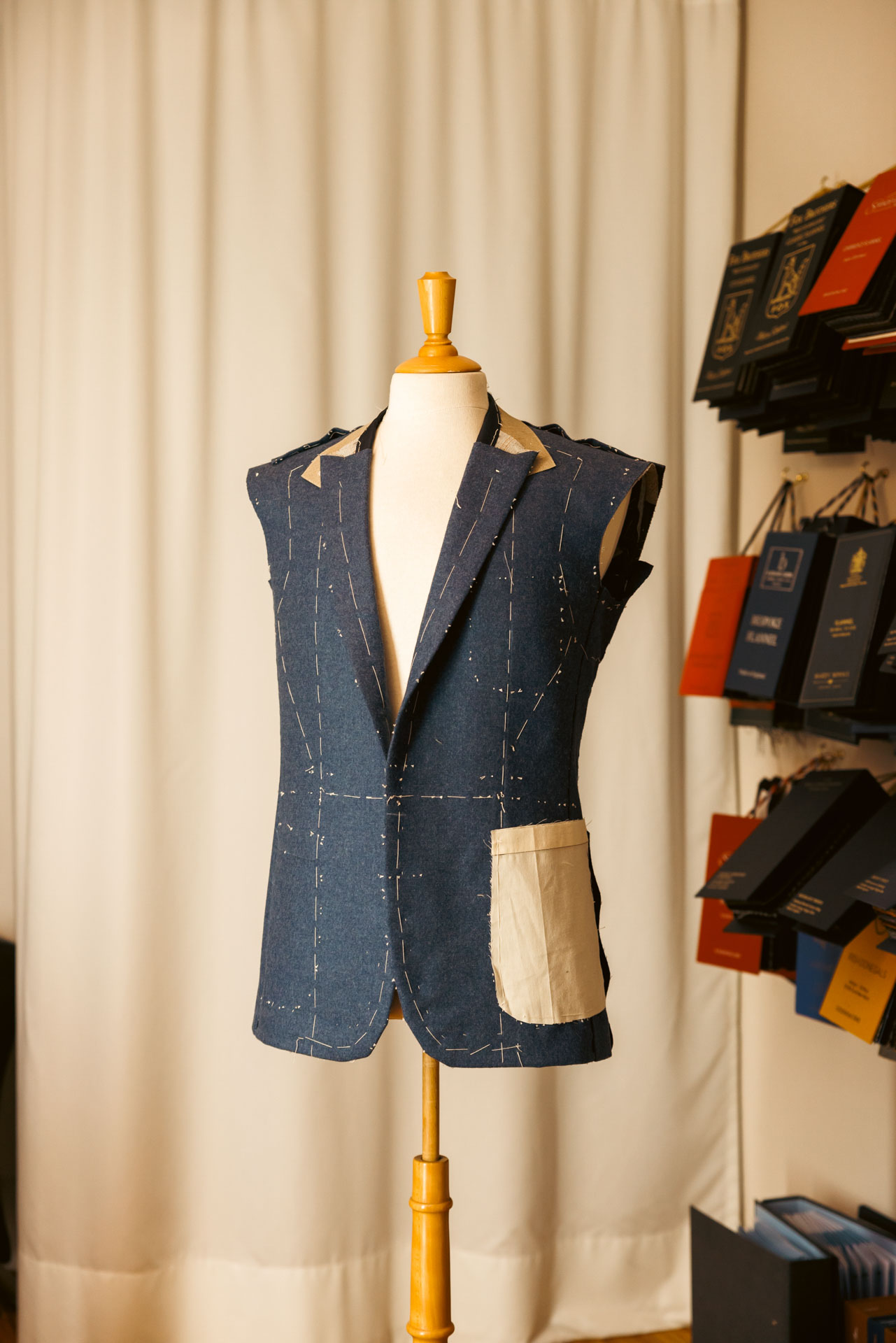
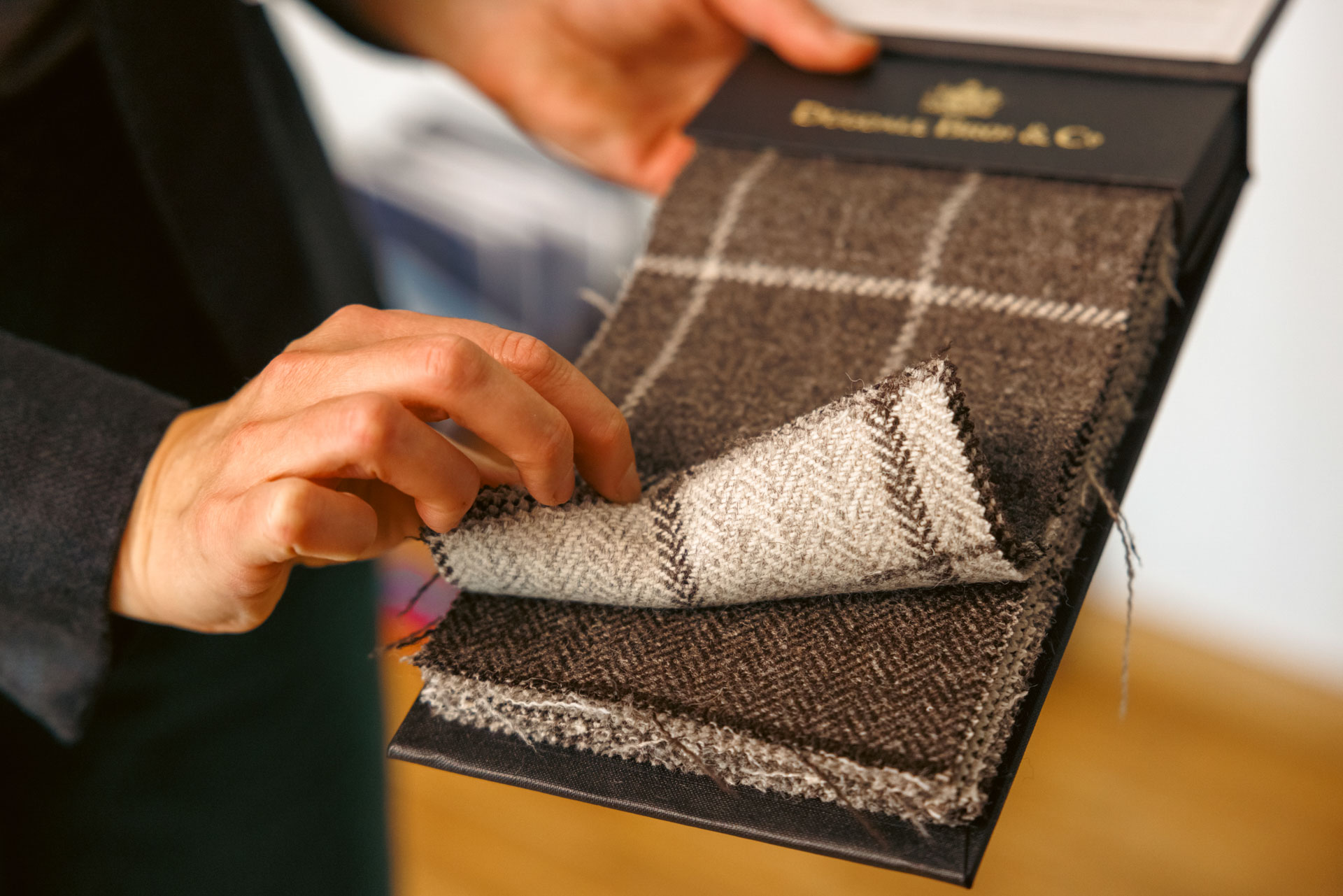
German men’s tailors are less internationally renowned than their colleagues from Italy or England. There are many reasons for this. Until the 1960s, the whole world was overshadowed by London’s men’s tailors, even though there were still many bespoke tailors active in every European country at the time. Even in the Eastern Bloc, it was only the fabrics from the West that were difficult to obtain. Even back then, there were customers who had their suits made abroad, but bespoke tailoring was still largely a purely local business. Because of the fittings, it is difficult to sell this craft at a distance. Traveling costs time and money, for the customer or the tailor. In the 1980s, the London tailors nevertheless set off, mostly to the USA, but also to Germany, France and Switzerland. Italian tailors only jumped on the bandwagon later, as they had a lot of customers in the country. Locals and foreigners.
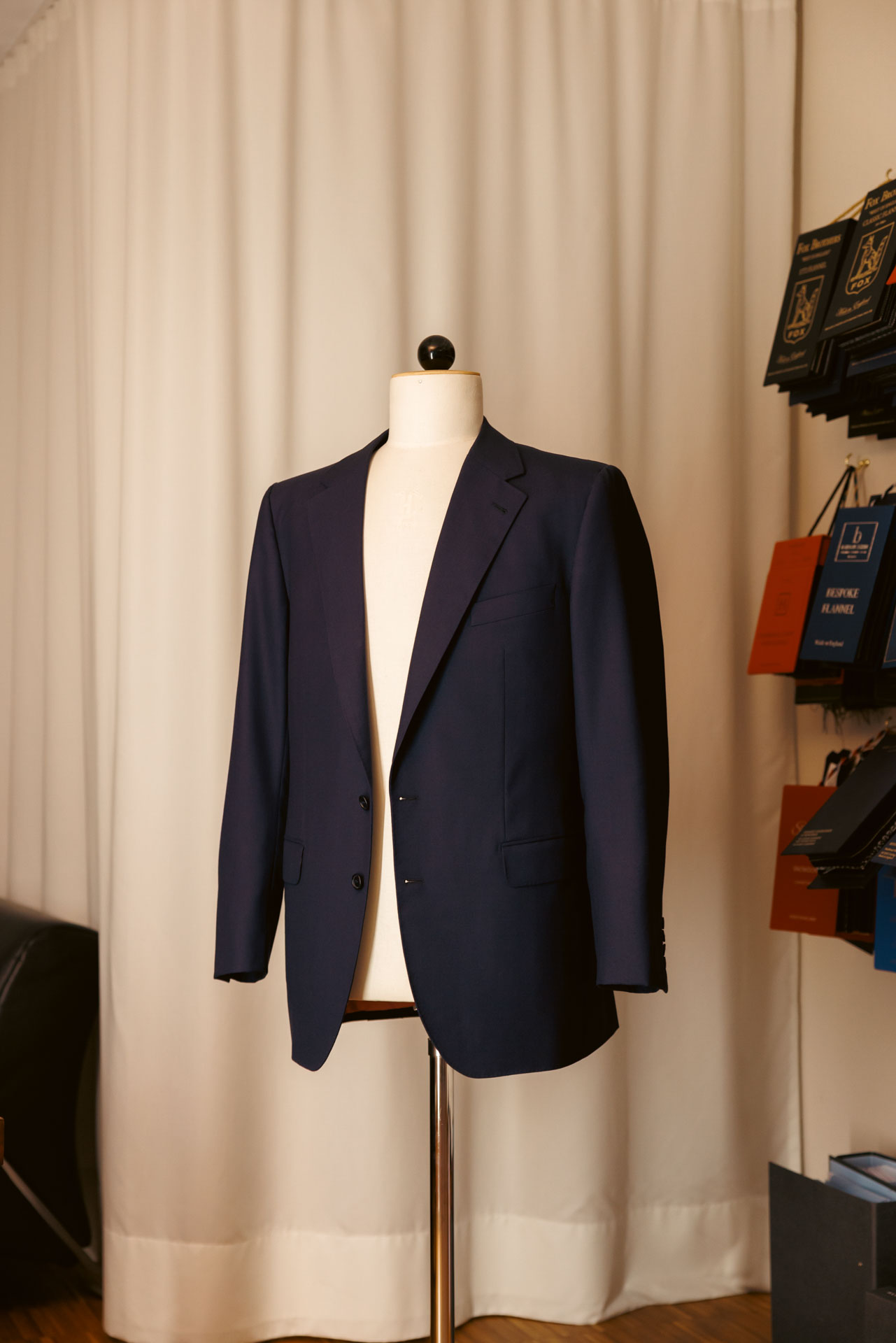

The coronavirus crisis has disrupted much of what has been built up over decades in terms of “trunkshows”. As a result, some customers began to take an interest in local craftsmen again. And those who had work done at home anyway were happy. Even though everyone is able to travel again, the after-effects of the pandemic can still be felt. Also with Kathrin Emmer. In the past, she mainly sewed business suits; jackets and more sporty suits were the exception rather than the rule. At the moment, it’s the other way around. Kathrin Emmer still supplies many classic suits, jackets and coats, but customers are increasingly requesting pieces that are more versatile. During our visit, we were able to see a few fine examples of this development. A double-breasted suit in light tweed from the Ecology collection by Dugdale Brothers. A coat made of heavy, dark blue wool fabric (810 g/m) from the “Classic Overcoatings” bundle from Holland & Sherry, a double-breasted Glencheck sports jacket made of fabric from the same weaving mill, and a light blue sports jacket with patch pockets made of a lambswool-cashmere blend from Fox Brothers.
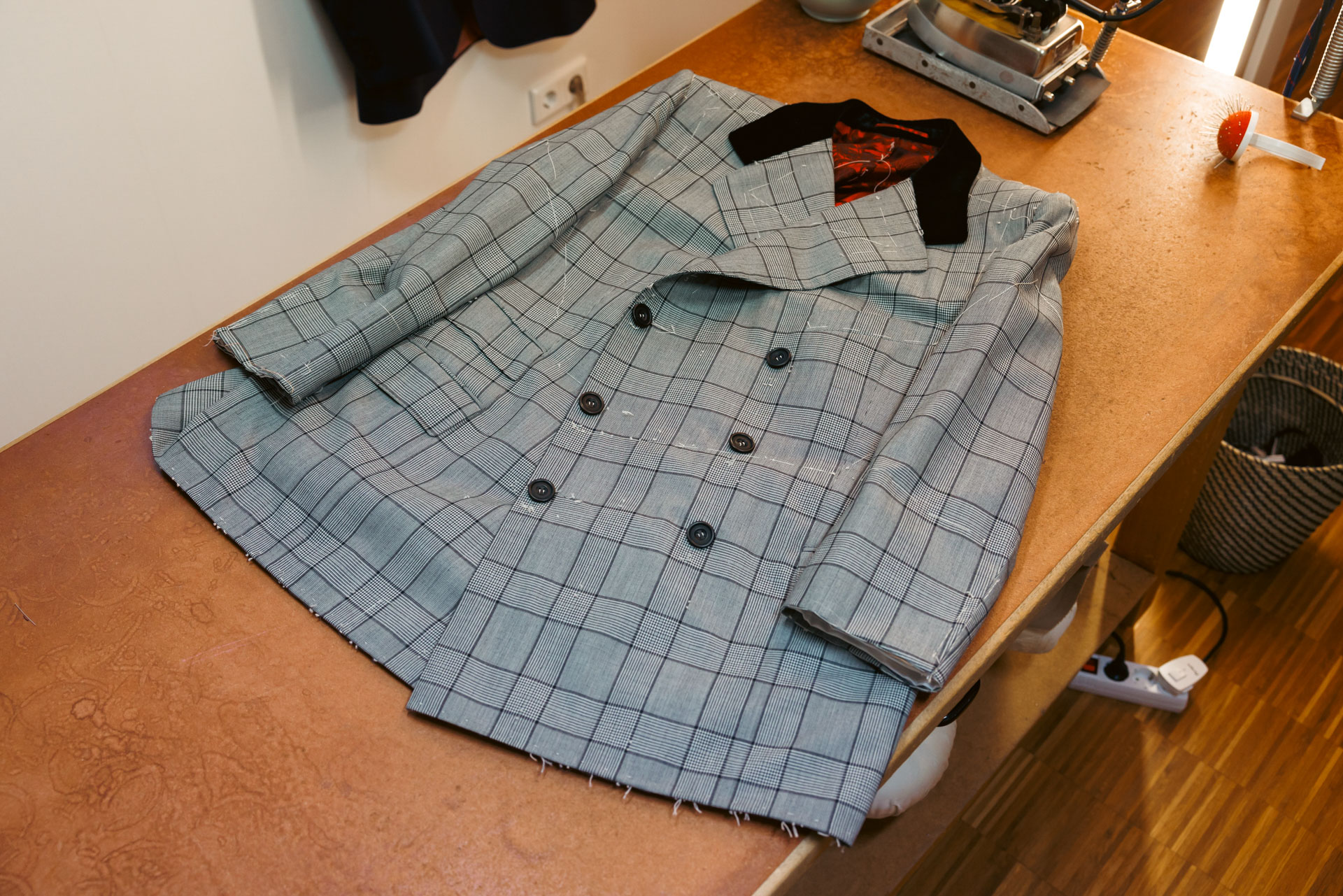
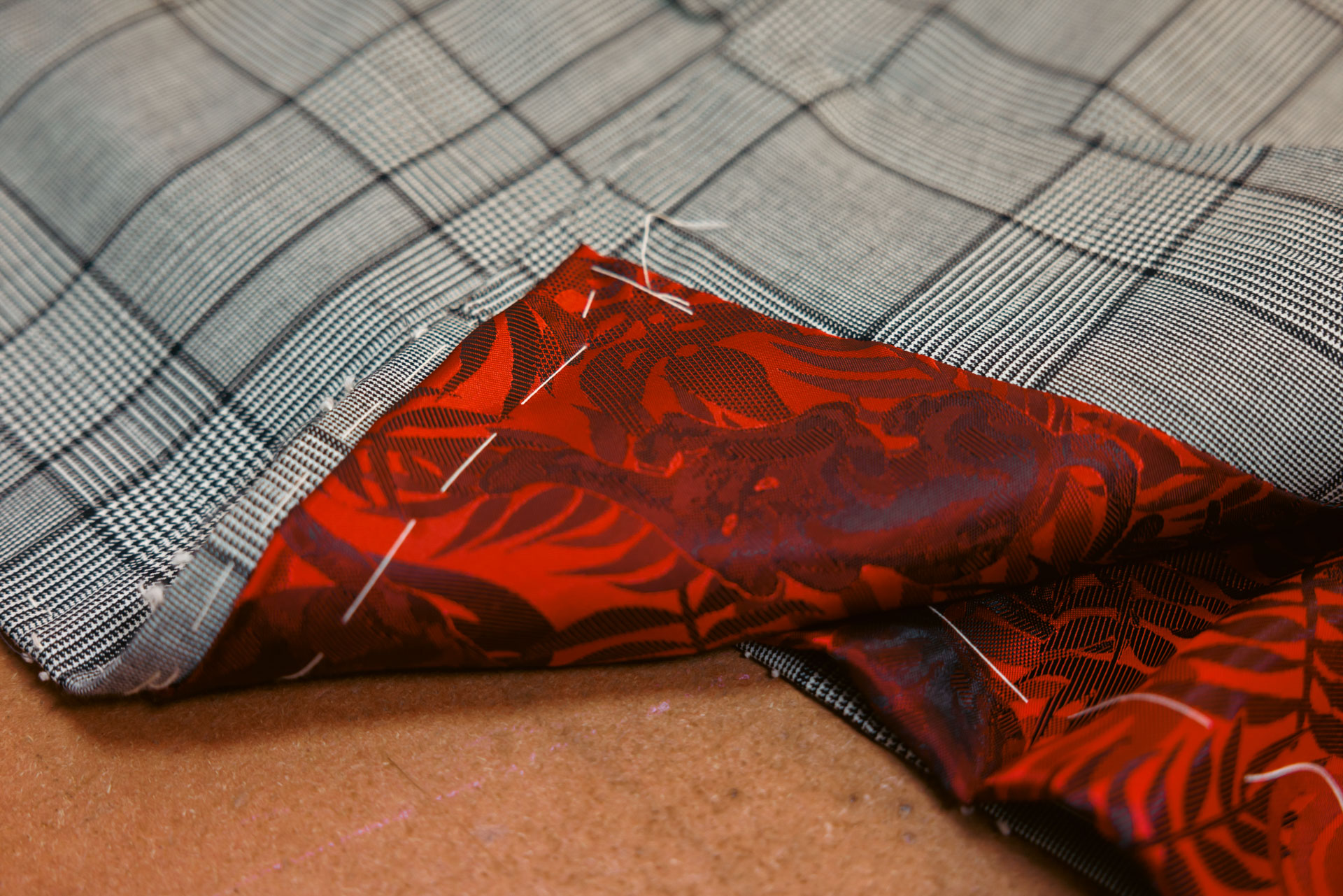
The tweed suit is a very typical example of “bespoke” in terms of design, cut, workmanship and not least the fabric. For reasons of discretion, Kathrin Emmer did not give any insight into the creation process of the details, she only revealed that the suit was created in dialog with the customer. The fabric consists of undyed wool from the Jacobs and Black Welsh Mountain sheep breeds, completely processed from the raw fiber to the finishing in Huddersfield. The color is created purely by mixing different colored fibers, so each “batch” is slightly different. The weight is 520 g/m, which is slightly less than most Alsport tweeds, so it is a very wearable fabric for colder days. The pleated pants have side buckles, a wide waistband and a small ticket pocket. Instead of turn-ups, a contrasting hand stitch adorns the hem. The double-breasted jacket immediately catches the eye with its plaid upper collar, which is made from plaid tweed, also from the Ecology bundle by Dugdale Brothers. And at the back, the rounded saddle, whose seam, decorated with a contrasting hand stitch, continues into the sleeve seam.
The double-breasted, mid-length coat looks very classic at first glance, then you discover the red accents. They give it a touch of guard uniform. The fabric is quite heavy by today’s standards, but perfect on cold days. If you wear a coat like this over a tweed jacket or a heavy suit, you are also protected against sub-zero temperatures on longer outings. On less chilly days, you can wear a coat like this over a shirt and a light cashmere sweater. The red lining with a small floral pattern provides an exciting contrast to the military austerity of the coat. A decorative stitch around the opening on the tongue pocket echoes the red of the lining.
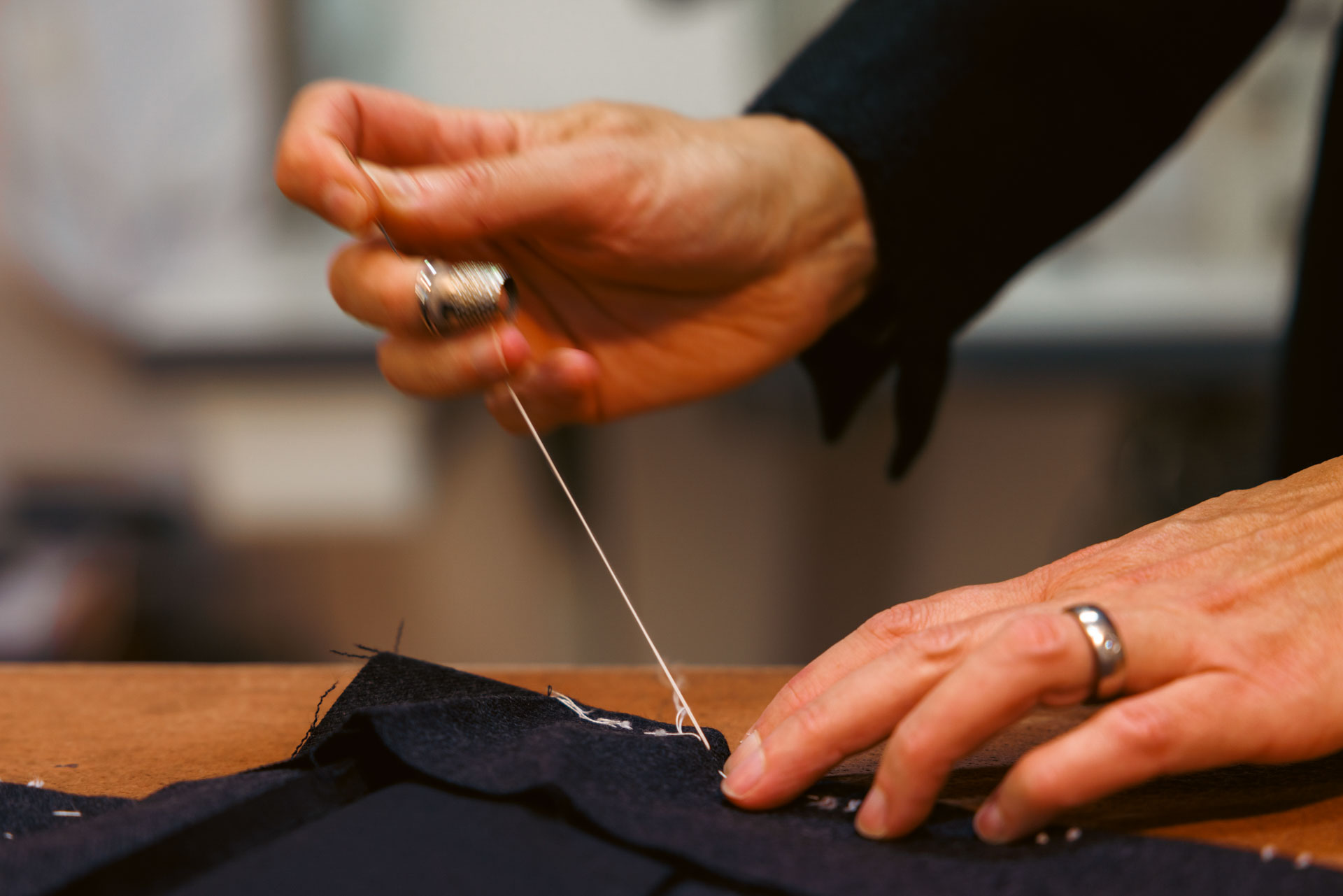
The jacket made of the light blue lambswool cashmere fabric from Fox Brothers is not quite finished yet, the patch pockets are still placeholders made of linen for the fitting at this stage. This is also “bespoke” in the sense that the customer has a great deal of freedom in designing all the details. Tailor-made clothing is a little more limited in this respect, despite all the possibilities it offers. As a rule, it is not possible to freely choose the shape and size or even the position of pockets, usually only in certain size increments according to the available cutting dies. Kathrin Emmer, on the other hand, will help you make a decision during the fitting if a stylistic detail could not be clarified or determined before the fitting. For example, in the form of a provisionally stapled pocket or a pocket drawn only as an outline.

In addition to the three pieces presented, which are a little out of the ordinary, there were also more conventional business suits in dark shades of gray or blue hanging in the workshop. In addition, two blue suits have just been brought in for ironing, a service that is a matter of course at Kathrin Emmer. When asked whether she sees herself more as a “creative” bespoke tailor or as a supplier of solid classics for business and occasion, she answers very cautiously. She doesn’t want to be pigeonholed into one or the other. This restraint in self-description is understandable. Once you’re booked as a tailor specializing in eccentric requests, the conservative suit wearers stop coming. I have known Kathrin Emmer’s work since the beginning of her self-employment, and I have found her to be very good at both: classic men’s tailoring with a focus on tradition. And stylistic excursions in the direction of design. Both cut and finished with the utmost precision. And always cut and sewn entirely in-house.
